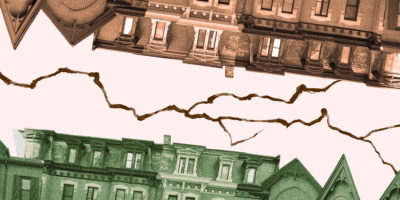By Matthew Behrens
As the gap of the inequality widens in Canada and abroad, more and more people are taking to the streets in protest. There is no single way to protest, it depends on what you hope to gain by your action. However, the risks most Canadians take in demonstrating are small compared to those in countries like Indonesia, Burma, Guatemala, and some parts of Turtle Island (such as Ipperwash, where Dudley George was murdered). But for the newcomer considering taking part for the first time, here are some helpful hints to consider.)
Chanting
While it can fire up a crowd or keep spirits together, chanting can also be very mundane (“Hey hey, ho ho, Oppressor X has got to go” is tiresome for long-time demonstrators). Thought should be given to clever chants which fit easily into a sentence. Consider “Need not Greed” over “assist all those exploited by the capitalist class and assist them now!”
Silence
The sight and sound of a large group of people staring disapprovingly in silence is a powerful one. Think of the stare you used to get – or perhaps still get – from disapproving parents. Silence has a strong, dignified quality about it which shows your determination. It is not to be confused with timidness. Stopping the chants for a few minutes can be a real relief, especially in a direct confrontation.
Police Dogs
The role of dogs – besides intimidation – is simple. They are there to hold someone until an officer can drag them away. Again, yelling and screaming at dogs doesn’t work much. If a dog grabs you, do not try to run away as you could be seriously injured. Stop in your tracks, pet the dog’s head and talk calmly to it. The dog’s role it to hold you, not bite you. A milk bone goes a long way with a dog.
Pepper Spray
It’s an incredibly hot, stinging substance used in preference to tear gas (which tends to drift back into the faces of the police) that temporarily destabilizes you. Plastic water bottles should be on hand to flush out eyes. Do not rub your eyes. Also, if someone has been sprayed, do not let them go on their stomachs (they could suffer asphyxia). Keep them upright.
Media
Generally uninformed, the media want their little clip so they can move on. The can be annoying, but they’re good to have around in tense situations, acting as a buffer against possible police violence. Have a press release for them with the 5 W’s.
Macho Men Alert
One of the biggest single problems encountered by demonstrations is the macho factor of the male gender which insists on a) being the centre of attention b) yelling the loudest c) pushing around those with whom we disagree d) hogging the media spotlight.
Singing
Song has been a vital part of demonstrations for years, from the women’s movement to the civil rights struggle. Singing can relieve tension and keep spirits high. At a recent tense anti-poverty demonstration, things calmed down quite a bit when a small number of squatters began singing the Sesame Street theme.
Diffusing Tensions
In any situation (such as a standoff on Queen’s Park steps or the beginning of building occupation,) the key is keeping things focused and disciplined. Sitting, stopping the chants and letting people get their sense of space is always a good thing (and not a reflection that you’ve lost your militancy).
Police Horses
It’s a long way from Sunnybrook Farm to a downtown alleyway and many horses are forced to attend loud and raucous demonstrations. They are used to break up a crowd, separate groups, and intimidate the hell out of you. Remember, horses are sensitive creatures so when they come towards you, chanting and screaming only increases everyone’s tension, the horses included. Sitting down before horses is a good idea. They do not like to step on you and you can pet their legs to let them know where you are. Carry a few carrots or sugar cubes to gain their favor.
Non-Violence Training
A day-long workshop on non-violence is good for people attending numerous demonstration or committing civil disobedience. Such a workshop covers the history and philosophy of nonviolence looks at decision making, how to organize specific kinds of nonviolent actions (sit-ins, blockades, etc.), body protection, arrests, courts, jail and other essential info .
Undercover Cops
Agents provocateurs have a long and ignoble history in disrupting demonstrations to make the demonstrators look bad. This usually involves encouraging physical violence or attempting to divert the demo to where it is less effective.
If you are Arrested
It seems you really have to step out of line to be in an arrest situation these days because the press picks up on it immediately. Police often give you the option of moving from one place to another. The organizers should have someone prepared to follow anyone arrested to the police station and track them through the system.
Matthew Behrens is active in Toronto Action for Social Change. He has been involved in organizing hundreds of demonstrations and acts of civil disobedience over the last 15 years. He also trains people in non-violence.










Leave a Reply